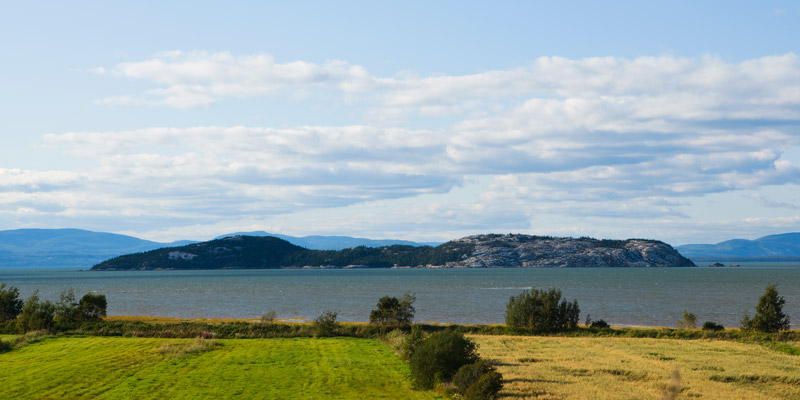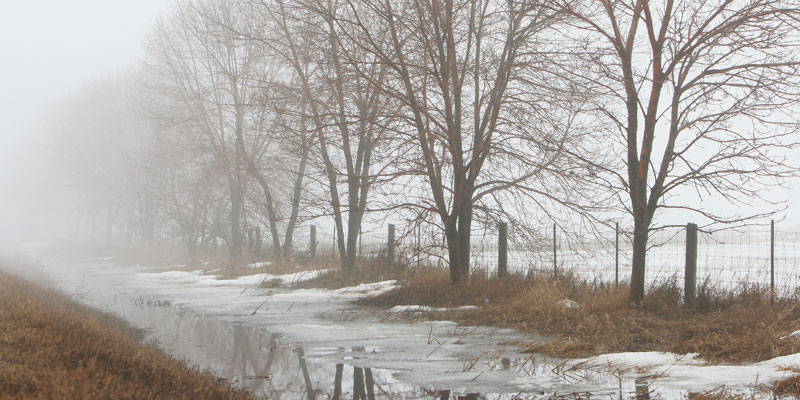Holistic Assessment of the Factors Important for the Maintenance and Restoration of Rivers in Agricultural Watersheds
Principal Investigator - Michael Robin, Professor, University of Ottawa (2005-2007)

Challenge
The health of a river systems is maintained through external and internal variables. These include the social and institutional interplay between competing water uses. Issues of water quantity and quality are linked to societal patterns that impede remedial actions – conflicting demands and uses and societal perceptions and traditions. Resolution of these associated conflicts can help remove barriers to remediation. Some of the more vulnerable and contentious watersheds in Canada are those impacted by agriculture. At a time when Ontario is developing watershed-based source water protection strategies while also investing aggressively in ethanol production and allowing accelerated livestock production, this research project provides a framework to provide holistic characterization of the social environmental and economic drivers within a river basin. A multi-disciplinary approach integrates results and provides the final product: a holistic assessment of a representative waterway in Ontario.
This research offers the industry and the public information for better decision-making including barriers to action and specific land use activities that contribute to water quality decline. It also provides a set of practical recommendations that can improve the state of the river from an ecological, hydrological and societal stand point and inform judgements on current and future development.
Project
The project research was located in the Raisin River (RR) basin in Ontario, as it offered diversity in hydrogeological systems, land uses, and agricultural practices. The fieldwork studies identified sources of contaminant loading on the river to provide direction for targeted remedial efforts. In 2005, over 100 km of Electrical Conductivity and Temperature (ECT) methodology reconnaissance work was carried out, identifying 50 areas of preferential groundwater discharge and contaminant loading along the river.
Novel methods for estimating seepage were developed using land-based thermal infrared (IR) imagery, vertical streambed temperature profiles, and streambed temperature mapping. Once possible sources of contaminant loading were located, they were sampled for other environmental stressors. The study helped quantify the contribution of agricultural industry to nutrient and herbicide loading on groundwater and surface water.
The research team collected data through a number of presentations at land owner meetings, and interviews with individual land owners to identify barriers to environmentally sound practices. They then developed a set of “prescriptions for action” for specific land use activities that contribute to water quality decline, with practical recommendations to improve the state of the river from an ecological, hydrological and societal stand point, including mechanisms to involve the active participation and acceptance of stakeholders.
Outputs
- Creation of a “State of the River Report”, to contribute to the RRCA initiatives including the Natural Heritage Strategy, Fish Habitat Management Plan and Tributary Restoration Program.
- Integration of the results from the various disciplines provided a holistic assessment of the state of the Raisin River.
- Training provided to the RRCA, the South Nation Conservation Authority on ECT to assist their teams in conducting future surveys.
Outcomes
- The research will assist in the Remedial Action Plan (RAP) for the St. Lawrence River Areas of Concern (AOC), to produce more effective and targeted remedial efforts.
- Informed investment decisions as the project data has contributed to preparation of water budgets, and target specific sites where aquifer parameters and fluxes are now measured directly.
- Changes in practice as several sites were instrumented with temperature loggers, piezometers, pressure transducer loggers, seepage meters, and stream gauges. This information can be used in water budgeting within the larger Eastern Ontario Source Water Protection Region (EOSWPR).
- Informed decision-making for industry and the public based on information regarding barriers to action and specific land use activities that contribute to water quality decline. It also provides a set of practical recommendations that can improve the state of the river from an ecological, hydrological and societal stand point and inform judgements on current and future development.




